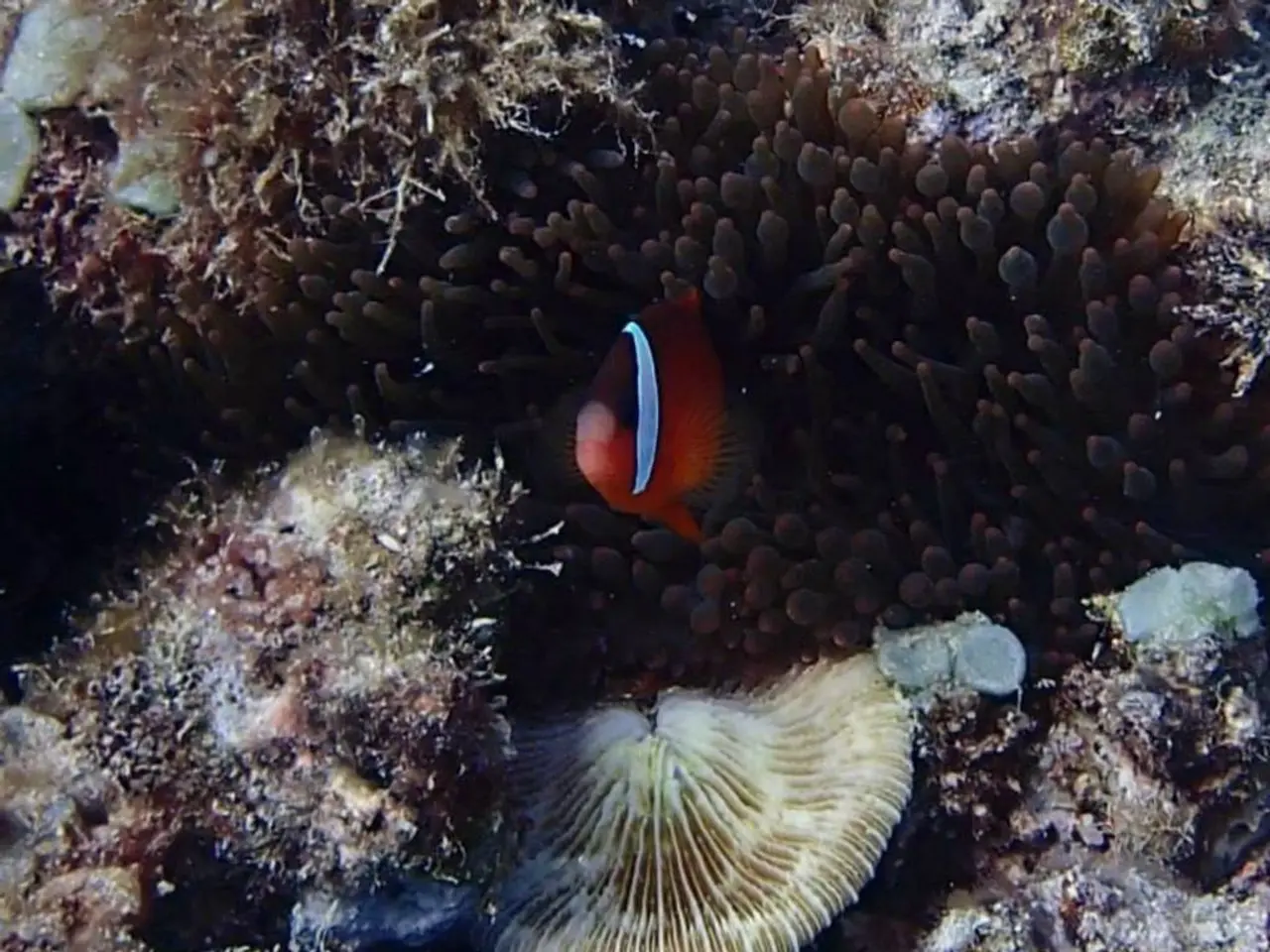Capturing Miniature Seahorses, the Pygmy Variety
In the captivating world of underwater macro photography, pygmy seahorses are an iconic subject that attract photographers from around the globe. However, their delicate nature and habitat require careful consideration to ensure they remain safe and undisturbed in their natural environment.
To minimize impact on these tiny creatures and their environment, adhering to best practices is essential. First and foremost, maintaining a safe distance from the seahorses is crucial. Avoid chasing, touching, or manipulating them, as any physical contact can stress the animals or damage their habitat.
Practicing excellent buoyancy control is also vital to prevent accidental coral damage or stirring up sediment, which can harm delicate ecosystems. Furthermore, it's important to avoid disturbing or damaging their host gorgonian corals, as pygmy seahorses cling tightly to these for camouflage and protection.
Photography should be used ethically, capturing images that aid identification and awareness without forcing the animal to move or hide. Minimizing flash use and employing low-impact lighting can help reduce stress on the animals. Tools like underwater slates can be used to record notes or sketches without needing to repeatedly disturb the site.
These guidelines emphasize photography as a tool for appreciation and scientific observation rather than interaction. Pygmy seahorses, such as Hippocampus bargibanti and Hippocampus denise, remain safe in their natural habitat, especially on vulnerable gorgonian corals like Muricella species.
Pygmy seahorses are shy animals that do not like to make eye contact and are easier to photograph from the side with negative space behind their perch. Vertical shooting format is recommended for pygmy seahorse photography due to their shape.
When it comes to equipment, a single strobe placed above the centerline of the lens provides excellent results. Spot focus is recommended, with the focal point always placed on the eye of the seahorse. The maneuverability and ease of focus and framing offered by compact camera systems make pygmy seahorse photography more accessible.
Resorts and liveaboards have implemented protocols aimed at best preserving the animals and their homes while also providing opportunities for photographers. Having the dive guide assist with the snoot or camera position can help achieve low-impact, high-probability image capture.
It's important to check images for proper exposure, clipping, and focus before leaving the subject during pygmy seahorse photography. The smallest species of pygmy seahorse measures an astounding 1/4" as full-sized adults, while the largest species measures 3/4".
Pygmy seahorses, such as Hippocampus denise and Hippocampus ponyohi, are commonly found in deeper waters, often below 60 feet and sometimes more like 90 feet. Interestingly, Hippocampus denise lives on at least nine genera of gorgonians, while Bargibanti's pygmy seahorse is found on a single genus of gorgonian coral, Muricella.
Denise's and Bargibanti's pygmy seahorse settle on a specific host after birth and remain on that very gorgonia for the rest of their lives. All pygmy seahorses are found in the Indo-Pacific. There are seven different species of pygmy seahorses in the genera Hippocampus.
In conclusion, responsible pygmy seahorse photography is essential for their protection and conservation. By adhering to best practices and treating these creatures with respect, we can ensure that future generations will have the opportunity to appreciate and learn from these fascinating creatures.
- In the captivating world of underwater macro photography, pygmy seahorses are a popular subject that attract photographers globally.
- Their delicate nature necessitates careful consideration to preserve them and their habitat.
- Maintaining a safe distance from pygmy seahorses is essential to protect them from stress or harm.
- Avoiding physical contact, chasing, or manipulating them is crucial for their well-being.
- Buoyancy control is vital in preventing accidental coral damage or disturbing sediment.
- Gorgonian corals, which serve as pygmy seahorse hosts for camouflage, must not be disturbed or damaged.
- Ethical photography is key, focusing on images that promote identification and awareness without causing discomfort to animals.
- Minimizing flash usage and employing low-impact lighting can help reduce stress on the animals.
- Underwater slates can be used for recording notes or sketches without repeatedly disturbing the site.
- Pygmy seahorses should be appreciated as objects of interest rather than interacted with.
- Species such as Hippocampus bargibanti and Hippocampus denise are safer in their natural habitats, especially on vulnerable corals like Muricella species.
- Pygmy seahorses tend to be shy, preferring to avoid eye contact and photograph better from the side with negative space.
- A vertical shooting format is recommended for pygmy seahorse photography due to their shape.
- A single strobe above the centerline of the lens and spot focus on the seahorse's eye yield excellent results.
- Compact camera systems offer ease of focus, framing, and maneuverability, making pygmy seahorse photography more accessible.
- Responsible pygmy seahorse photography is crucial for their protection and conservation, ensuring future generations can appreciate these fascinating creatures.




